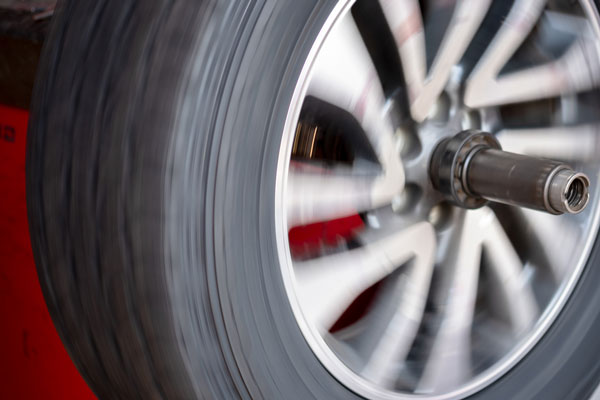In this article, we will explore the importance of high-speed balancing techniques in achieving optimal performance for vehicles. We will delve into the various methods used to balance vehicles at high speeds and discuss how this can enhance overall performance.
What are High-Speed Balancing Techniques?
High-speed balancing techniques are methods used to ensure that all components of a vehicle are evenly distributed and aligned, particularly at higher speeds. When a vehicle is properly balanced, it can operate more efficiently and effectively, leading to better overall performance.
There are several techniques used to achieve high-speed balancing, including dynamic balancing, static balancing, and computerized balancing. Dynamic balancing involves rotating the wheels at high speeds to detect any imbalances and then applying weights to correct them. Static balancing focuses on aligning the weight distribution of the wheel and tire assembly. Computerized balancing uses advanced technology to pinpoint and correct imbalances with precision.

How Do High-Speed Balancing Techniques Improve Performance?
High-speed balancing techniques play a crucial role in enhancing the performance of vehicles in several ways. Firstly, by ensuring that all components are properly balanced, vehicles experience less vibration and noise, leading to a smoother ride for the driver and passengers.
In addition, balanced wheels and tires reduce wear and tear on the suspension system, prolonging the lifespan of the vehicle. Improved balance also results in better fuel efficiency, as the engine does not have to work as hard to compensate for any imbalances. Overall, high-speed balancing techniques contribute to a safer and more comfortable driving experience.
What Types of Vehicles Benefit from High-Speed Balancing Techniques?
Virtually all types of vehicles can benefit from high-speed balancing techniques, regardless of size or purpose. From cars and motorcycles to trucks and buses, any vehicle that operates at high speeds can see improvements in performance with proper balancing.
Race cars, in particular, rely heavily on high-speed balancing techniques to maximize performance on the track. Even everyday commuter vehicles can benefit from balanced wheels and tires, resulting in a more enjoyable driving experience for the average driver.
How Often Should High-Speed Balancing Techniques Be Performed?
The frequency at which high-speed balancing techniques should be performed varies depending on the vehicle and the driving conditions. As a general rule of thumb, it is recommended to have your wheels balanced every 6,000 to 10,000 miles or at least once a year.
Additionally, if you notice any signs of imbalance, such as vibrations or uneven tire wear, it is essential to have your wheels balanced as soon as possible. Regular maintenance and proper care of your vehicle’s balance can significantly impact its overall performance and longevity.
What Are the Common Signs That a Vehicle Needs High-Speed Balancing?
There are several common indicators that a vehicle may need high-speed balancing. Vibrations felt in the steering wheel or throughout the vehicle, uneven tire wear, and noises such as thumping or humming can all be signs of imbalance.
If you notice any of these symptoms while driving, it is essential to have your wheels balanced as soon as possible to prevent further damage to your vehicle and ensure a safe driving experience.

Conclusion
In conclusion, high-speed balancing techniques are indeed the key to optimal performance for vehicles of all types. By ensuring that components are evenly distributed and aligned, vehicles can operate more efficiently, resulting in a smoother ride, improved fuel efficiency, and enhanced overall performance. Regular maintenance and proper care of a vehicle’s balance are essential for maximizing its lifespan and ensuring a safe driving experience.
FAQs
1. Can high-speed balancing techniques improve fuel efficiency?
Yes, high-speed balancing techniques can improve fuel efficiency by reducing the strain on the engine and ensuring that all components are properly aligned. Balanced wheels and tires lead to smoother operation, resulting in better fuel economy.
2. Are high-speed balancing techniques only necessary for sports cars?
No, high-speed balancing techniques are beneficial for all types of vehicles, including everyday commuter cars, trucks, and buses. Proper balance improves performance, safety, and comfort for drivers of all vehicles.
3. How can I tell if my vehicle needs high-speed balancing?
If you experience vibrations, uneven tire wear, or unusual noises while driving, it may be time to have your wheels balanced. Regular maintenance and paying attention to signs of imbalance are key to ensuring optimal performance.
4. How often should I have my wheels balanced?
It is generally recommended to have your wheels balanced every 6,000 to 10,000 miles or at least once a year. However, if you notice any signs of imbalance, such as vibrations or uneven tire wear, it is essential to have your wheels balanced promptly.
5. Can high-speed balancing techniques prevent premature wear on vehicle components?
Yes, high-speed balancing techniques can prevent premature wear on vehicle components by ensuring that all parts are properly aligned and distributed. Balanced wheels and tires reduce strain on the suspension system, resulting in extended longevity for the vehicle.

















